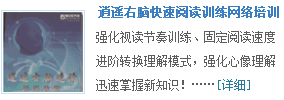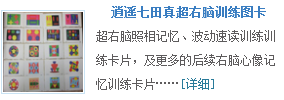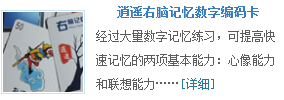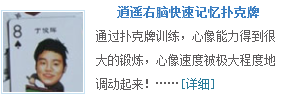M6 U3(Word Power / Grammar / project)
同步练习二
I. Fill in the blanks with the proper colour idioms given below:
green with envy; in the black; white as a sheet;
tickled pink; feeling blue; in the red
1. Alice was ___________________ because she got a really good job for summer.
2. I have been _________________ kind of ____________ all these days because I failed in
the driving test.
3. Hearing the disturbing news, he went ___________________ and backed off immediately.
4. James made everybody else _________________ when he showed off his enormous talents.
5. I don’t think Kate is that poor. As a matter of fact, her account is _____________________.
6. This is the company’s fourth straight your ________________________________.
II.Complete the following sentences with the words given in proper form:
A)根据课文内容完成下列各句。
1. Today, every independent country has a flag that gives it a _____ ________.
2. A flag tells us something about the country it ______ and often _______ the origin of that country, along with its values, beliefs and culture.
3. The colors red、white and blue used on the flag are a _______ ________ of the motto of the Revolution―liberty、equality and fraternity.
4. Blue ______ ______ for liberty and justice, while white represents peace and honesty.
5. Like in many other countries, the color white is ________ as a _______ of purity in Indonesia.
6. As taxpayers, they felt that they could no longer ______ not having a ______ in the government.
7. They ______ independence, but the British ______ this.
8. With the Declaration of independence, the USA ______ ______ Britain and became an autonomous nation with a federal government.
9. The flag, which could not be ______ simplified, is a red band over a white, and is based on a national flag ______ back to the 13th century that had nine red and white stripes.
10. The flag is also a good place to see some of the _______ and ________ between countries.
B)根据首字母提示填写单词
1. Color is a m_______ for expressing different feelings but the meaning depends on the society.
2. D______ ago, there was not a single tall building in our village.
3. Usually associated with p_______ meanings, green is most strongly connected to life.
4. On the n_________ side, green can show envy.
5. In some cases, white is also a r____________ of holiness.
6. In some other cases, white h________ all that is bad in human nature.
7. Red is a color f____ brave and loyal character.
8. In some areas, red i___________ sadness, as in South Africa, where it is the color of mourning.
9. Otherwise, you might make an u_________ statement about yourself that you do not want to
make!
10. We`d better stop working since it is going to rain; in a_______, it is getting dark.
III. Multiple Choice:
1. Meeting my uncle after all these years was an unforgettable moment, _____ I will always treasure. A. thatB. oneC. it D. what
2. One of the men held the view ____ the book said was right.
A. what thatB. whatC. the oneD. that what
3. ---How do you like the cake? ---It’s quite different from ____ I had last month.
A. thatB. whichC. the oneD. the one what
4. It was true ____ Alice did surprised her mother.
A. thatB. whatC. that what D. what that
5. The reason ____ the little actress has been such a success is ____ she is both clever and
hard-working A. why; why B. why; thatC. that; because D. for; because
6. It worried her a bit ____ her hair was turning grey. A. whichB. thatC. if D. for
7. I’ll keep the promise ____ I made two years ago.
A. whenB. whichC. whetherD. what
8. I’ll keep the promise ___ I’ll buy him a CD after he passes the exam.
A. thatB. whichC. whenD. whether
9. I hate ____ when people talk with their mouths full.
A. it B. thatC. theseD. them
10. ___ is a fact that English is being accepted as an international language.
A. ThereB. ThisC. ThatD. It
11. We don’t doubt ____ he will succeed in the research work.
A. thatB. whetherC. howD. what
12. The news ____ we heard spread all over the school campus. Which is wrong?
A. thatB. whichC. /D. as
13. Suddenly the thought came me ____ he could go blind.
A. thatB. whichC. /D. when
14. It is the fact _____ he doesn’t know his own birthday ____ surprises us all.
A. which; whichB. that; thatC. which; thatD. that; which
15. A story goes ____ Elizabeth I of England liked nothing more than being surrounded by
Clever and qualified noblemen at court. A. whenB. where C. whatD. that
IV. 阅读理解:
A
Colour blindness is a condition in which a person cannot see all colors. This defect(缺陷) is more common in men than in women. About 60 million people in China suffer from such a defect. Usually they can see only two basic colors and live in a black and white world. They are often unable to tell other colors, especially red from green. This defect can bring about problems because many colour-blind people do not realize that their eyesight is defective. They have learned to use the colour names that everyone else uses, and they fail to know that they do not see the colors that others see. There is a risk that their condition may place them in danger. If they mix up red with green, for example, they may be able to tell traffic signals only by their brightness. Scientists believe that color blindness is a defect received from the parents and grandparents, and no medical treatment can make these people see as well as other. However, the well-known eye doctor Zhao Wenging, who has invented looking glasses to help those suffering from color blindness, said that when some of these people tried his invention, their joy was hard to imagine. Somebody said it was like the window that had suddenly been thrown open to his soul. From then on he saw such a beautiful world.
1. Most colour-blind people can’t tell ____. A. black from white
B. red from green C. the two basic colorsD. any colors
2. How many people in China are colour-blind?
A. About one out of twenty.B. About six out of one hundred.
C. About one out of six.D. About four out of one thousand.
3. Color blindness may cause problems because those who suffer it __________.
A. do not use color names correctlyB. do not know they can’t see all colors
C. do not see traffic signals D. do not realize their eye conditions are in danger
4. Which of the following is NOT mentioned in the passage?
A. Color-blind people can’t see so well as normal persons.
B. Color-blind people may meet with dangers because of this defect.
C. Color-blind people can’t do special jobs.
D. Color-blind people parents may also have such defect.
B
Clothing is a language. It tells us something about a person: his personality, his age, his place in society and so on. If we want to know more about a society, we can look at its traditional clothing.
The continent of Africa has a long history and a rich culture, and this is shown in traditional dress. You often find three colors―red, gold and green ?in the clothing. The first color stands for the blood of millions of people who suffered as slaves; the second is for the rich resources of the African land; the third represents the grasslands of the continent.
The patterns on the clothing also have a meaning. A common pattern is in the form of a cross “X”, which stands for “unity”. Another pattern is a rectangular (长方形的) box, which represents “strength”.
Because clothing has a strong social meaning, people are very careful in choosing what to wear. It would be a serious mistake to wear wrong clothing, or to wear clothes in the wrong way. For example, in Ghana, a woman should wear her waistband (腰带) differently according to the importance of a social event.
Traditional dress also tells us about everyday life. African designs are famous for loose clothing. The climate, with the hot sun and changeable temperatures, requires (要求) that the clothes be comfortable for daily life.
Although many people wear Western clothes, particularly in the big cities in Africa, traditional African dress is very highly valued. This is because it has deep cultural meanings.
5. The main topic of this passage is about _________.
A. the history of clothes in Africa B. fashionable patterns of African dress
C. the meanings of traditional African dressD. the reason for loose clothing in Africa
6. According to the passage, the red color in traditional African dress _________.
A. represents the setting sunB. stands for African unity
C. is chosen because of its bright color D. is a reminder of its sad history
7. In Africa, clothes should be dressed properly according to different situations, because ____.
A. the climate there is changeable B. clothing has a strong social meaning
C. people will be punished if they don’t wear suitable clothes
D. other people want to know the person’s personality
8. Which of the following is NOT mentioned in the passage about traditional African dress?
A. Colors.B. Social meanings. C. Materials.D. Designs.
C
There is no doubt about it. The best way to learn new words is to do it unconsciously (无意识地). I don’t mean while you’re unconscious. I mean while you are unconscious of the fact that it is sinking in.
That is how I learnt the 30,000 words in my vocabulary by living in an English-speaking world, mother tongue. I just pick them up. But some of them may be misunderstood. Now, to misunderstand does not mean not to understand. To misunderstand is to understand but incorrectly.
The 5% mislearnt of all the words we “Know” will be the least frequently used words, as the more frequently used words are less likely to be mislearnt. Some of the misunderstandings may live with all our lives, without knowing that we got them wrong.
Many English teachers think that this natural method of learning words in one’s own mother tongue can be used for a second language learning. They teach their students how to play the Guessing Game. “There is no time to look up in your dictionaries all the new words you come across,” they will say. “You have to practice guessing what the word means from the context.”
This method of guessing in a second language learning does not work. It may succeed in many cases, but results in hundreds or thousands of wrongly-guessed meanings of words.
And what’s more, there are more separate meanings than there are words themselves. Our learners’ dictionaries usually have many meanings. A good dictionary is what makes self-learning possible.
Don’t guess! Look it up!
9. It is certain that the best way to learn new words it ____. A. to learn them by oneself
B. to learn by living in an English-speaking world and using them frequently
C. to guess them from the context D. to get more separate meanings of each word
10. The underlined word “them” in Paragraph 2 refers to _____. A. the 30,000 words
B. English teachers C. misunderstood wordsD. frequently used words
11. Which of the following is most likely NOT true?
A. Some of the words the writer knows must have been misunderstood.
B. Most of the 30,000 words the writer learned are frequently used ones.
C. How many words the writer got wrong are not known.
D. All the words the writer knows were learned by reading them.
12. It can be inferred that ___________.
A. when somebody is conscious, he or we usually can’t learn new words by heart
B. We must use the words as often as possible in order to master them
C. it’s the best way to learn new words that one should only guess their meanings from the
context
D. only dictionaries can help us learn language well
I、 学习与颜色相关的习语
under color of 在---的幌子下off color (身体)不舒服
a black sheep 害群之马a black horse 黑马/脱颖而出的人
out of the blue 突如其来feel blue 感到不高兴,忧郁
be green with envy 妒忌a green hand 没有经验的人,生手
be green at 在----方面没经验in the black 赢利
be black with anger 怒气冲冲be in a black mood 情绪低落
black and blue 遍体麟伤black and white 白纸黑字
in the red 负债turn red with anger 因发怒而脸涨红
get out of red 不再亏空turn white as a sheet 因害怕而脸变惨白
U3 同步练习二答案
I. 1.tickled pink 2.feeling; blue 3.white as a sheet 4. green with envy 5.in the black 6. in the red
II. A)1. unique、 identity 2. represents、 symbolizes 3. visual、 reminder 4.stands、 for 5.regarded、 symbol 6. tolerate、 say 7. desired、 opposed 8. split、 from 9. further、 dating
10. similarities;differences
B)1. medium 2. Decades 3. positive 4. negative 5. representation 6. highlights 7. for 8. indicates 9. unconscious 10. addition
III. 1―5 BDCCB 6―10 BBAAD 11―15 ADABD
IV. 1--4 BA BC 5. C A/B/D以偏概念 6. D第二段第三句。7. B 第四段最后一句。8. C
9--12. DADB
U3 同步练习二答案
I. 1.tickled pink 2.feeling; blue 3.white as a sheet 4. green with envy 5.in the black 6. in the red
II. A)1. unique、 identity 2. represents、 symbolizes 3. visual、 reminder 4.stands、 for 5.regarded、 symbol 6. tolerate、 say 7. desired、 opposed 8. split、 from 9. further、 dating
10. similarities;differences
B)1. medium 2. Decades 3. positive 4. negative 5. representation 6. highlights 7. for 8. indicates 9. unconscious 10. addition
III. 1―5 BDCCB 6―10 BBAAD 11―15 ADABD
IV. 1--4 BA BC 5. C A/B/D以偏概念 6. D第二段第三句。7. B 第四段最后一句。8. C
9--12. DADB
U3 同步练习二答案
I. 1.tickled pink 2.feeling; blue 3.white as a sheet 4. green with envy 5.in the black 6. in the red
II. A)1. unique、 identity 2. represents、 symbolizes 3. visual、 reminder 4.stands、 for 5.regarded、 symbol 6. tolerate、 say 7. desired、 opposed 8. split、 from 9. further、 dating
10. similarities;differences
B)1. medium 2. Decades 3. positive 4. negative 5. representation 6. highlights 7. for 8. indicates 9. unconscious 10. addition
III. 1―5 BDCCB 6―10 BBAAD 11―15 ADABD
IV. 1--4 BA BC 5. C A/B/D以偏概念 6. D第二段第三句。7. B 第四段最后一句。8. C
9--12. DADB
U3 同步练习二答案
I. 1.tickled pink 2.feeling; blue 3.white as a sheet 4. green with envy 5.in the black 6. in the red
II. A)1. unique、 identity 2. represents、 symbolizes 3. visual、 reminder 4.stands、 for 5.regarded、 symbol 6. tolerate、 say 7. desired、 opposed 8. split、 from 9. further、 dating
10. similarities;differences
B)1. medium 2. Decades 3. positive 4. negative 5. representation 6. highlights 7. for 8. indicates 9. unconscious 10. addition
III. 1―5 BDCCB 6―10 BBAAD 11―15 ADABD
IV. 1--4 BA BC 5. C A/B/D以偏概念 6. D第二段第三句。7. B 第四段最后一句。8. C
9--12. DADB
U3 同步练习二答案
I. 1.tickled pink 2.feeling; blue 3.white as a sheet 4. green with envy 5.in the black 6. in the red
II. A)1. unique、 identity 2. represents、 symbolizes 3. visual、 reminder 4.stands、 for 5.regarded、 symbol 6. tolerate、 say 7. desired、 opposed 8. split、 from 9. further、 dating
10. similarities;differences
B)1. medium 2. Decades 3. positive 4. negative 5. representation 6. highlights 7. for 8. indicates 9. unconscious 10. addition
III. 1―5 BDCCB 6―10 BBAAD 11―15 ADABD
IV. 1--4 BA BC 5. C A/B/D以偏概念 6. D第二段第三句。7. B 第四段最后一句。8. C
9--12. DADB
U3 同步练习二答案
I. 1.tickled pink 2.feeling; blue 3.white as a sheet 4. green with envy 5.in the black 6. in the red
II. A)1. unique、 identity 2. represents、 symbolizes 3. visual、 reminder 4.stands、 for 5.regarded、 symbol 6. tolerate、 say 7. desired、 opposed 8. split、 from 9. further、 dating
10. similarities;differences
B)1. medium 2. Decades 3. positive 4. negative 5. representation 6. highlights 7. for 8. indicates 9. unconscious 10. addition
III. 1―5 BDCCB 6―10 BBAAD 11―15 ADABD
IV. 1--4 BA BC 5. C A/B/D以偏概念 6. D第二段第三句。7. B 第四段最后一句。8. C
9--12. DADB
U3 同步练习二答案
I. 1.tickled pink 2.feeling; blue 3.white as a sheet 4. green with envy 5.in the black 6. in the red
II. A)1. unique、 identity 2. represents、 symbolizes 3. visual、 reminder 4.stands、 for 5.regarded、 symbol 6. tolerate、 say 7. desired、 opposed 8. split、 from 9. further、 dating
10. similarities;differences
B)1. medium 2. Decades 3. positive 4. negative 5. representation 6. highlights 7. for 8. indicates 9. unconscious 10. addition
III. 1―5 BDCCB 6―10 BBAAD 11―15 ADABD
IV. 1--4 BA BC 5. C A/B/D以偏概念 6. D第二段第三句。7. B 第四段最后一句。8. C
9--12. DADB
U3 同步练习二答案
I. 1.tickled pink 2.feeling; blue 3.white as a sheet 4. green with envy 5.in the black 6. in the red
II. A)1. unique、 identity 2. represents、 symbolizes 3. visual、 reminder 4.stands、 for 5.regarded、 symbol 6. tolerate、 say 7. desired、 opposed 8. split、 from 9. further、 dating
10. similarities;differences
B)1. medium 2. Decades 3. positive 4. negative 5. representation 6. highlights 7. for 8. indicates 9. unconscious 10. addition
III. 1―5 BDCCB 6―10 BBAAD 11―15 ADABD
IV. 1--4 BA BC 5. C A/B/D以偏概念 6. D第二段第三句。7. B 第四段最后一句。8. C
9--12. DADB
U3 同步练习二答案
I. 1.tickled pink 2.feeling; blue 3.white as a sheet 4. green with envy 5.in the black 6. in the red
II. A)1. unique、 identity 2. represents、 symbolizes 3. visual、 reminder 4.stands、 for 5.regarded、 symbol 6. tolerate、 say 7. desired、 opposed 8. split、 from 9. further、 dating
10. similarities;differences
B)1. medium 2. Decades 3. positive 4. negative 5. representation 6. highlights 7. for 8. indicates 9. unconscious 10. addition
III. 1―5 BDCCB 6―10 BBAAD 11―15 ADABD
IV. 1--4 BA BC 5. C A/B/D以偏概念 6. D第二段第三句。7. B 第四段最后一句。8. C
9--12. DADB
U3 同步练习二答案
I. 1.tickled pink 2.feeling; blue 3.white as a sheet 4. green with envy 5.in the black 6. in the red
II. A)1. unique、 identity 2. represents、 symbolizes 3. visual、 reminder 4.stands、 for 5.regarded、 symbol 6. tolerate、 say 7. desired、 opposed 8. split、 from 9. further、 dating
10. similarities;differences
B)1. medium 2. Decades 3. positive 4. negative 5. representation 6. highlights 7. for 8. indicates 9. unconscious 10. addition
III. 1―5 BDCCB 6―10 BBAAD 11―15 ADABD
IV. 1--4 BA BC 5. C A/B/D以偏概念 6. D第二段第三句。7. B 第四段最后一句。8. C
9--12. DADB
本文来自:逍遥右脑记忆 http://www.jiyifa.net/gaosan/75098.html
相关阅读:2012届高考英语必考词汇90天复习案:第69天
闂佺粯顨呴悧濠傖缚閸喓鐝堕柣妤€鐗婇~鏍煥濞戞瑧顣叉繝鈧导鏉戞闁搞儜鍐╂殽闁诲海鎳撳﹢閬嶅极鏉堛劎顩查柟鐑樻磻缁挾绱撻崘鈺佺仼闁轰降鍊濋獮瀣偪椤栨碍顔囬梺鍛婄懄閸ㄨ偐娑甸埀顒勬煟濮樼厧娅欑紒杈ㄧ箘閹风娀濡烽敂鐣屸偓顕€鎮峰▎蹇撯偓濠氬磻閿濆棛顩烽柛娑卞墮閺佲晠鎮跺☉鏍у缂傚秵妫冮幊鎾诲川椤旇姤瀚虫繛瀛樼矋娴滀粙鍩€椤掆偓閸婄懓锕㈤幍顔惧崥婵炲棗娴烽惌宀勬煙缂佹ê濮冪紒璺虹仛缁岄亶鍩勯崘褏绀€闁诲孩绋掗敋闁稿绉剁划姘洪鍜冪吹闂佸搫鐗嗙粔瀛樻叏閻斿吋鏅悘鐐跺亹閻熸繈鏌熼弸顐㈠姕婵犫偓娓氣偓楠炲秹鍩€椤掑嫬瀚夊璺侯儐缂嶁偓闂佹寧绋戞總鏃傜箔婢舵劕绠ラ柟绋块椤庢捇鏌i埡鍏﹀綊宕h閳绘棃寮撮悙鍏哥矗闁荤姵鍔х徊濂稿箲閵忋倕违闁稿本鍑瑰ú銈夋煕濞嗘劕鐏╂鐐叉喘瀵敻顢楅崒婊冭闂佸搫鐗嗛ˇ鎵矓閸︻厸鍋撳顒佹拱濠德や含閹噣顢樺┑瀣當闂佸搫顧€閹凤拷/闁哄鏅滅换鍐兜閼稿灚浜ゆ繝闈涒看濞兼劙鏌i妸銉ヮ仼闁哥偛顕埀顒€婀卞▍銏㈡濠靛牊瀚氱€瑰嫭婢樼徊娲⒑椤愶紕绐旈柛瀣墬缁傛帡骞嗛弶鎸庮啎 4509422@qq.com 婵炴垶鎸鹃崑鎾存叏閵堝鏅悘鐐跺亹椤忚京绱撴担鍝ョ闁绘搫绱曢埀顒€婀遍崕鎴犳濠靛瀚夋い鎺戝€昏ぐ鏌ユ倶韫囨挻顥犻柣婵囩洴瀹曟氨鎷犻幓鎺斾患闂傚倸瀚ㄩ崐鎴﹀焵椤掑﹥瀚�





